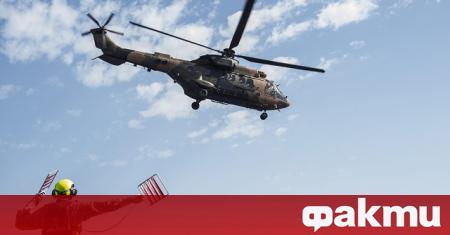
[ad_1]
Hundreds of Armenians and Azerbaijanis died in the battles for Nagorno-Karabakh and many people from the region left their home countries. What is it like to live in a war? Report from the town of Barda, just 20 km from the front line.
The flames have almost completely devoured Ilgar Farazaliev’s previous life. Some silverware in the kitchen, a frame of glasses, some family photos – these are the charred remains. A rocket hit his home in early October, Ilgar said. The house where he had lived for 35 years burned to the ground.
“The whole family had gathered and was watching television when an explosion shook the backyard,” he said. “We ran out and immediately called the fire department, but when it arrived, it was too late.”
Ilgar Farazaliev lives in the Azerbaijani city of Barda, about 20 km from the Nagorno-Karabakh front line. He is convinced that the Armenians fired the rocket that hit his home. According to him, in recent weeks the neighboring country has intentionally bombed civilian targets in Azerbaijan. However, there is no independent evaluation on the subject.
A war to impose different visions
Armenia and Azerbaijan have fought again for Nagorno-Karabakh since the end of September. Under international law, the region belongs to Azerbaijan, but the Armenian separatists are in power there. Both sides announce their military successes and blame each other for inciting conflict. And in targeted attacks on residential neighborhoods.
As a mediator, Russia has twice achieved a ceasefire, but both agreements quickly failed. The third agreement reached in Washington was also violated. In one month, the number of civilian casualties exceeded 100. According to the Armenian authorities, almost 1,000 soldiers have already died. Azerbaijan has reported no casualties.
The Nagorno-Karabakh war is also a war to impose certain points of view. Both governments are trying to influence public opinion, with the help of social media and television channels.
Azerbaijan is ruled in an authoritarian manner and freedom of expression is subject to massive restrictions, say human rights activists. And for the moment there is a state of martial law: from 21 to 6 the curfew is applied. Internet access is often restricted and censorship is strict. Twitter, Facebook and a number of communication applications are regularly blocked, the day passes under the sign of military propaganda. Foreign journalists cannot approach the front and only have the information provided by the Azerbaijani authorities.
And authorities like to show pictures of places like Barda High School 6, where refugees have been housed since the beginning of the war – more than 100 families. Most come from the neighboring town of Terter, where heavy artillery fire has been raging between Armenian and Azerbaijani troops for weeks. For this reason, many people have left Terter. However, some of the city’s residents have stayed and are hiding in basements.
Old conflict, new battles
The deafening roar of cannons can be heard all the way to the schoolyard in Barda, where refugee children play. In front of the entrance, next to a black and white photo, are red carnations – in memory of an Azerbaijani soldier who died in the first Nagorno-Karabakh war 30 years ago. Then, after the collapse of the Soviet Union, Azerbaijan lost control of this region, populated mainly by Armenians. In 1994 a fragile truce was reached with the mediation of the OSCE, which, however, did not resolve the territorial dispute permanently.
The refugees from Barda’s Sixth School are convinced that their army is waging a just war. Musela Musaeva, deputy director of the school, is of the same opinion. However, he does not believe that the Azerbaijani side is also shelling civilian targets in Nagorno-Karabakh, nor that there are many dead Armenians and many refugees. “I don’t know what’s going on on the Armenian side. I just know what I see here on our television,” Musaeva said. “However, I am convinced that the Armenians will lose. It is time for them to withdraw. We are not fighting to occupy Armenian territory, we just want to regain what is ours.”
That’s what refugee Zabil Aliyev thinks, who has been living at the school for several weeks with his wife Nahide and three granddaughters. They are also from neighboring Terter. In their new “home”, cups and plates are placed on the school desks and a small gas stove burns on the floor. “I’m worried about the girls. They were so scared when the fight started,” Aliyev said from his folding bed. “They have to go to school.”
What else will happen?
Aliyev doesn’t think diplomatic mediation and a temporary truce can accomplish anything. The other Aliyev, the country’s president, remains confident of a military solution. “No one can break our resolution,” Ilham Aliyev said in a meeting with senior military officials on state television. He added that the enemy would be driven out and Azerbaijan would regain Nagorno-Karabakh.
But what do these intentions mean for civilians on both sides, including the refugees at the Barda school? Nobody knows the answer to this question. They may be coming home soon. Or to make it even scarier and have to drop out of school in Barda, because it can be dangerous there too.
Azerbaijan
[ad_2]